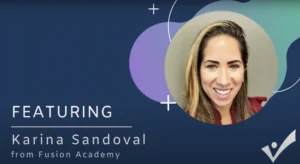Helping your student break it down
- thrivister
- March 30, 2023
As a parent, you know how overwhelming a big project can be for your student. Whether it’s a school assignment or a personal project, it’s easy to feel lost and unsure of where to begin. Especially if the student struggles when deploying executive function skills like planning, prioritizing, working memory, and more. That’s why it’s important to help your student learn how to break a project down into smaller, manageable steps. Here’s how to help them get started:
Step 1: Understand the project requirements
The first step is to read through the project instructions with them and make sure you both understand what is expected. Clarifying any questions or confusion before moving on to the next step is important. Don’t do this for them, guide them and implore them to do the discovery with help from you when they need it.
Step 2: Identify the project components
Once you understand the requirements, help your student identify the components of the project. For example, if it’s a research paper, the components might include choosing a topic, conducting research, creating an outline, writing a draft, and editing.
Step 3: Prioritize the components Next
Help your student prioritize the components of the project. Determine which components are most important and which ones can be done in parallel or sequentially. This will help them understand where to focus their efforts and how to move forward.
Step 4: Set deadlines For each component
Set a deadline for completion. Make sure the deadlines are realistic and give your child enough time to complete each step.
Step 5: Create a timeline Using the deadlines you’ve set
Create a timeline that outlines when your student will complete each component. This can help them stay on track and ensure that they have enough time to finish the project before the deadline.
Step 6: Track progress
As your student works through the project, encourage them to track their progress. This can be done by checking off completed components on the timeline or using a project management tool. Tracking progress will help your child stay motivated and on track.
If your student is more visual, and many students with ADHD are, try drawing out the project in a graphic form using these steps. Encourage them to use colors to help them hold focus longer and feel more invested in the creation process:
- Start with a blank piece of paper or a digital canvas.
- Write the main project goal or objective in the center of the page.
- Draw lines radiating out from the main goal, like spokes on a wheel.
- Label each spoke with a sub-goal or component of the project.
- Draw smaller lines or branches off of each spoke to represent specific tasks or steps needed to complete each component.
- Add color or visual elements to make the graphic more engaging and easier to understand.
The final graphic should resemble a spider diagram or mind map, with the main goal at the center and sub-goals branching out from it. Each sub-goal should have smaller branches representing the specific tasks or steps needed to complete it. This type of graphic can help visualize the project and make it easier to break it down into smaller, manageable components.
Breaking a project down into smaller, manageable steps can help your student feel less overwhelmed and more confident in their ability to complete the task. By following these steps, you can help your them develop important skills that will serve them well throughout their academic and professional careers.
At Thrivister, coaches step into that guiding role. This can help if tensions are high between you and your student and they are resistant to accepting your guidance. This can also really help if you feel overwhelmed by the process. Having a non-biased 3rd party supporting your student can make it possible for you to resume the role of the supportive parent and move away from feeling like you’re always nagging! If you’re interested in chatting with our enrollment team to learn more about coaching, please call at (866)442-0995 or email us here!

Thrivister Curriculum and Content Coordinator
Tracy has an extensive background in school management and operations. Her position as “Head of School” at a nationwide academy deepened her expertise in supporting students who learn differently. Just like Thrivister, Tracy knows how much a student can accomplish with the right support. Tracy joined Thrivister in the Spring of 2022 and is currently a valued member of our Marketing and Operations team where she specializes in content and curriculum management. You probably recognize Tracy from our Parent’s Academic Success Course and our social media too!

7 Trailblazing Celebrities and Icons Living & Thriving with ADHD
Explore the inspiring journeys of 7 influential individuals who have harnessed their ADHD to achieve greatness and make a lasting impact.

Unveiling the Complexities of ADHD: Insights from Dr. David Pomeroy
Unveiling the Complexities of ADHD: Insights from Dr. David Pomeroy https://youtu.be/EotABukIxlo Attention Deficit Hyperactivity Disorder (ADHD) is a multifaceted condition that impacts millions of lives

Navigating ADHD in Teens: Insights from MFT, Kelsey Thompson
Navigating ADHD in Teens: Insights from MFT, Kelsey Thompson https://youtu.be/omQndscdD5U In a recent interview with Kelsey Thompson, a seasoned Marriage and Family Therapist at The

Unlocking Potential: A Glimpse into Fusion Academy’s Personalized Education Model
Unlocking Potential: A Glimpse into Fusion Academy’s Personalized Education Model https://youtu.be/R7BgYW6A6k4 In the bustling world of education, where traditional models often struggle to meet the

